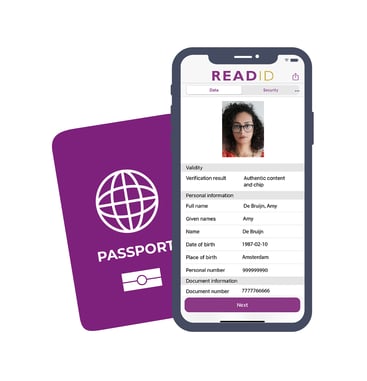An estimated 1 billion people worldwide from more than 185 countries have an electronic passport. Recent reports indicate that the latest ePassport pilot for Indian citizens has successfully navigated its pilot project.
It’s no surprise that the country with the largest population in the world is now beginning to issue ePassports to its citizens, or that this process takes a considerable amount of time. Using data from 2022 estimates, including the Indian Ministry for External Affairs, the volume of Indian citizens holding valid Passports for travel is between 92 million and 96 million. Given the size of the general population of India, the rapid expansion of its skilled labour force, and the willingness of its population to travel for economic reasons, this potential release of an Indian ePassport is not unexpected, but still a cause for exploration.
According to the World Bank Migration and Remittances Database, India ranks number 1 in the world for per annum migration of its population overseas for employment at an estimated 2.5m persons per annum. This makes the future issuing of ePassports to Indian citizens a powerful tool for migration and increases the speed and efficiency of border crossings by Indian citizens globally.
A Brief History of the Indian ePassport Programme
The idea of introducing ePassports in India to improve passport issuance security and efficiency started in the late 2000s, following a global push to enhance travel document security after the 9/11 attacks.
In 2008, the Indian government launched a pilot project to issue diplomatic ePassports to select individuals. This marked the first time that authorities embedded biometric data into Indian passports. These passports contained a chip storing biometric information (primarily the facial image and personal details of the passport holder), similar to the standards set by the International Civil Aviation Organization (ICAO). By 2010, India began issuing official ePassports (for diplomats and government officials) as part of its initial foray into biometric passports. This allowed the government to gain experience with the new system before scaling up.
In 2016, the Indian government announced its intention to begin issuing ePassports to ordinary citizens. This was part of a broader effort to digitize India under Prime Minister Narendra Modi’s Digital India initiative. The government revealed that it was actively working on ePassports for citizens in 2018. The development was done in collaboration with the India Security Press (Nashik), which was tasked with printing the ePassports and ensuring they conformed to the ICAO standards. In January 2022, the Indian government officially announced that it would begin issuing ePassports to all Indian citizens. The Ministry of External Affairs (MEA) began the process in coordination with the Central Passport Organization and the India Security Press and was set to include fingerprints and facial recognition data, stored in the embedded NFC chip.
The current status of Indian ePassports
As history shows there have been multiple attempts over the past 15 years to begin issuing ePassports to Indian citizens. Finally, there is a bright light at the end of the tunnel. Recent reports indicate that the latest ePassport pilot for Indian citizens has successfully navigated its pilot project. This is a huge step forward and signals the imminent and long-awaited availability of ePassports to Indian citizens to hopefully ease and speed up their international travel and other remote and in-person identification needs.
These reports are backed up by the recent use of ReadID Me, our freely available personal app, where we have detected initial readings of Indian passports. ReadID Me never stores personal information, and all metadata is fully anonymous, meaning we only see information such as the issuing state of the document and the presence of an NFC chip. This allows us to make sure we can fine-tune our products for both our government and commercial customers ahead of the formal roll-out of new documents such as Indian ePassports.
Given the size of the Indian population, and the current global circulation of ePassports being around 1 billion, a potential Indian ePassport issuance represents a further 10% growth in ICAO-compliant ePassports worldwide. This upcoming growth is something we will celebrate at Inverid as more and more citizens are allowed to securely and remotely verify and manage their identity.
The bottom line is over the coming years there will be 100 million more reasons to use ReadID thanks to the release of the Indian ePassport. If you are not already using NFC document verification as part of your identity verification processes, get in touch to see how ReadID can prevent fraud and in so doing save you time and money.










